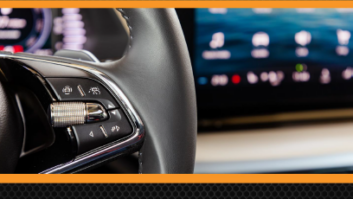Being Connected
Feb 1, 2010 12:00 PM, Chriss Scherer
How connected are you? Do you carry a cell phone? Maybe a Blackberry or Iphone? Perhaps an Ipod Touch or Zune with Wi-fi? The reality is we’re almost always connected in some way. It’s not always the most reliable connection, but there is usually a connection. With our increasing hunger for speed and data, we’re not always satisfied with what’s available, but it appears that is changing.

A recent report from ABI Research studied the proliferation of 802.11n Wi-fi in smartphones in 2009. The result? Less than 1 percent. That’s probably not a surprise. The report goes on to predict that smartphones with Wi-fi will increase to 84 percent by 2014. That’s definitely an impressive number.
Some might wonder why you would need Wi-fi if you can connect through the wireless network. If you use a wireless carrier for data, you know that it has limitations. It’s not always reliable mainly. Compared to an available Wi-fi hotspot, you will likely have better results from the Wi-fi.
What difference does this make? It’s another delivery path.
How many ways can an audio signal reach a listener? Over the air is the method most familiar to us in radio. Some cell carriers offer a service to stream audio, such as Verizon Vcast. Then there’s Internet streaming. I would consider those the main three methods.
Back to being connected: Everyone has a cell phone. Listeners might be willing to find a way to hear their favorite stations on the phone. (It’s more likely that phone user has songs stored on the phone and is using it like a media player.) I don’t see much acceptance of wireless-provided audio. Meanwhile, the NAB is pushing to have FM receivers built in to more phones. Also a good idea, especially if it doesn’t take up more bandwidth on the wireless carrier. Progress on this is slow.
Then there’s Wi-fi on a phone. For now, the idea of having to access multiple menus just to play a stream is cumbersome. But like every feature on a cell phone, popular functions become easier to use.
The real capability for the three data paths (and terrestrial radio is a data path in this instance) with a phone is for them to work in unison. The listener should not have to decide how he wants to hear a stream, he should only have to decide the source of the stream. If I pick my favorite rock station in Cincinnati, the phone can decide to first look for the FM signal, then look for a Wi-fi connection or the wireless network to provide the stream.
As conditions and my location changes, the phone can switch to the most robust path.
In the meantime, wireless networks will move to 4G, perhaps HD Radio will again see an increase in installations, and the NAB will keep pushing for FM receivers in phones. My view of the integrated receiving device just might come sooner than I thought.
What’s your opinion? Send it to [email protected]











